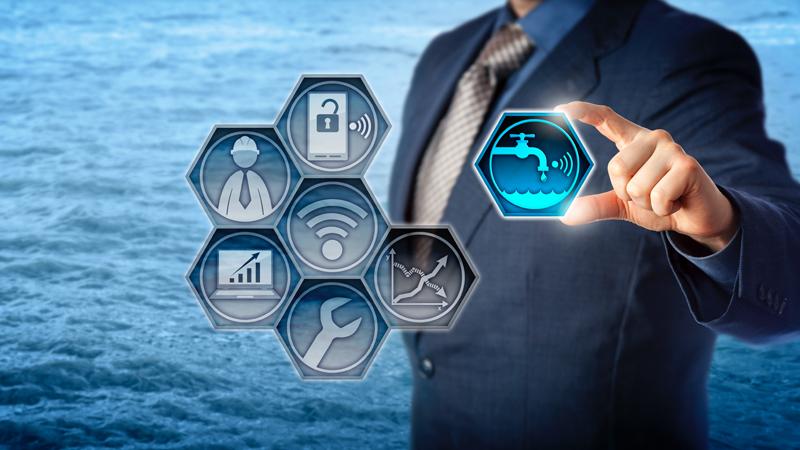Intelligent sanitation fittings are setting new standards thanks to digitalisation. Smartphone apps not only increase product functionality but also make them much easier to use. At the same time, the individual fittings are more than the sum of their components. Through digitalisation and connectivity, the various parts combine to make intelligent drinking-water systems – for greater comfort, efficiency and hygiene. Applications for the smart home are growing in popularity. Although they are still primarily to be found in the fields of entertainment, communication, energy management and security, drinking-water installations also offer a considerable potential, albeit one that has so far been rarely been exploited to any degree.
“Today, fittings can deliver much more than just water. They are digital, high-tech products that offer an impressive demonstration of the sector’s innovative power. Manufacturers of brand-name products are focusing more and more on people and their needs. Their aim is to create genuine added value, to offer greater convenience and to increase both health and vitality,” says Wolfgang Burchard, managing director of Germany’s VDMA Fittings association and spokesperson of the Blue Responsibility initiative.
Manufacturers interconnect fittings with each other and make them controllable via smartphones, thus enabling the user to centrally regulate, for example, the flow rates and temperatures of shower, washbasin and kitchen fittings. Thus, bathtubs can be filled with water of the desired temperature at the click of a mouse while smart-control solutions in the kitchen ensure that hot water is available for the pot straight from the fitting.
But that is not all: intelligent sanitation concepts mean house owners can automatically be sent notifications to their smartphones as soon as the system detects unusually high water consumption or a blocked pipe, so they can take all the steps necessary to repair the fault without delay.
Hygiene in COVID times – drinking-water technology is the key
The Covid pandemic has not only reduced the pace of life; the circulation of drinking water has also been slowed considerably. With many facilities being closed and the number of people in the office having been reduced significantly, numerous buildings have had none or hardly any water flowing through their pipes. And this is a problem because, if water stagnates, biofilms can form and provide a potential breeding ground for harmful pathogens and bacteria. Anyone wanting to prevent this must also ensure that a basic rule of hygiene is not broken even in unused or little-used buildings: water must flow. For, when our most important resource is in motion, it is difficult for biofilms to form and the danger of water contamination is reduced significantly. In this case, too, digitalisation is the key to optimum water management.
For instance, hygiene systems permit drinking-water installations to be flushed regularly or spontaneously, to counteract the formation of pathogens and bacteria. A click on the manufacturer’s app is all it takes to start pumps, activate valves and open taps. The temperature can also be regulated, thus permitting the installation to be flushed with hot water if required. Thanks to these measures, it is possible to reduce the danger of legionella, which multiply most rapidly when the water temperature is between 25 and 55°C. Important in this connection is not only the individual fittings but the whole system. For this reason, in particular, manufacturers of brand-name products have their eye on the drinking-water installation as a whole. Combining hardware and software, they offer innovative solutions that guarantee excellent drinking-water quality even in times of an international pandemic.






